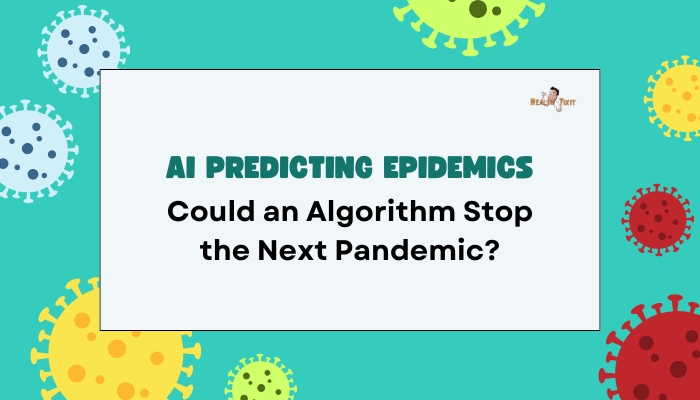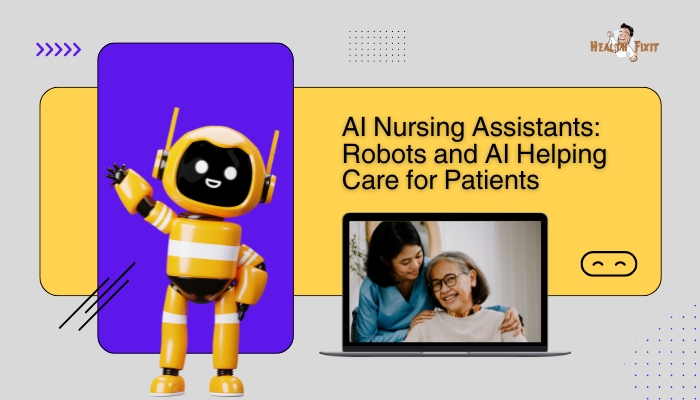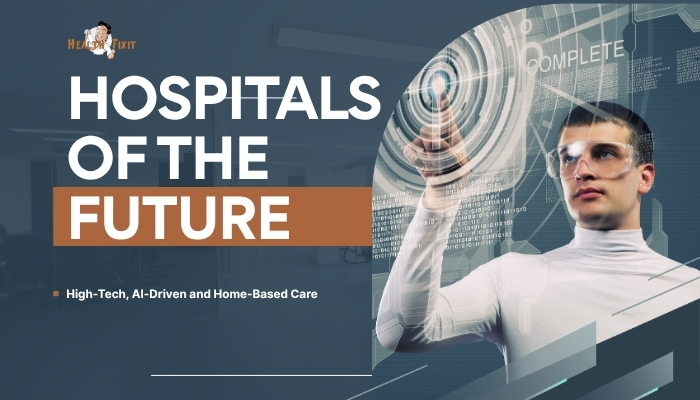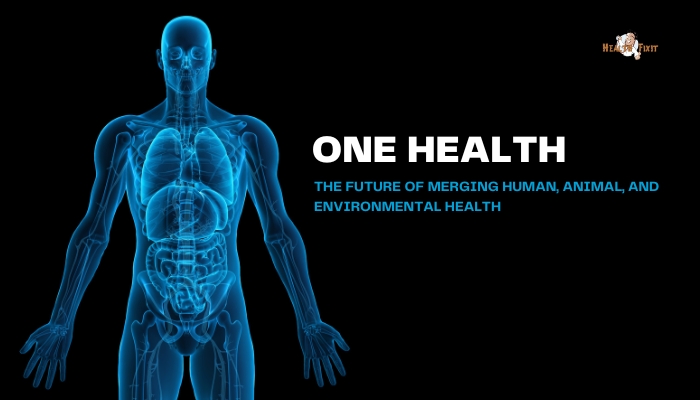Introduction
Disease outbreaks, such as the H1N1 swine flu or COVID-19, can spread rapidly across continents in an interconnected world.
Policymakers often scramble to implement travel restrictions, quarantine measures, or contact tracing, but by the time symptoms appear, it may be too late to prevent a global pandemic.
Enter artificial intelligence (AI): sophisticated algorithms that analyze vast datasets—ranging from social media chatter to satellite imagery and genomic sequences—to anticipate and track infectious disease emergence in near-real time. This article examines how AI could predict epidemics,
the technology’s successes and limits so far, and whether it might truly stop the next pandemic before it starts.
How AI Assists Epidemic Prediction
Big Data Sourcing
To predict outbreaks, AI must first feed on data from multiple channels:
- Health Records: Hospital visit logs, electronic health records (EHRs), pharmacy sales, insurance claims.
- Laboratory Reports: Daily data on pathogen detection from diagnostic labs.
- Environmental and Socioeconomic Factors: Weather patterns, population density, livestock movement, and trade data can indicate conditions ripe for pathogen spread.
- Online and Social Media: Web searches, social media posts, or news reports may give early signals of unusual cluster of symptoms or local panic.
Algorithms sift through these data troves to detect patterns or anomalies—perhaps a sudden spike in “flu-like” symptom mentions in a region or an uptick in pharmacy sales for cough medicines.
Machine Learning and Predictive Models
Machine learning can identify subtle correlations. For instance:
- Neural Networks: Complex pattern recognition for unstructured data (social media text).
- Random Forests: Combining multiple decision trees for more robust epidemic risk classification.
- Time-Series Modeling: ARIMA or LSTM-based models forecasting infection rates based on historical patterns, adjusting for external drivers like temperature or mobility.
- Graph Analysis: Mapping contact networks to see how an infection might jump from one cluster to another.
By fusing multiple approaches, AI can provide daily or even hourly alerts on potential outbreak hotspots.
Rapid Genome Sequencing and Analysis
Another AI dimension in epidemic prediction is genomic surveillance. When a suspicious pathogen emerges, labs can quickly sequence its genome,
and AI-based tools interpret mutations to forecast how it might spread or resist treatments. This speeds up contact tracing and vaccine design, crucial for viruses that mutate rapidly, such as influenza or coronaviruses.
Real-World Applications and Successes
[H3] Early COVID-19 Warnings
Certain platforms, like BlueDot and HealthMap, monitor global news reports and flight data. They flagged unusual pneumonia cases in Wuhan, China, days before the WHO’s official notice about COVID-19.
Although the pandemic was not averted, these early signals highlight AI’s potential to pick up subtle indicators of a brewing epidemic.
Dengue Fever Forecasting
In some tropical regions, AI-based systems track local weather (temperature, rainfall) and mosquito population data to predict dengue outbreaks weeks in advance
. Public health officials can target those hotspots with mosquito control, insecticide distribution, or community awareness campaigns, mitigating the outbreak scale.
Flu Trends from Web Searches
Google Flu Trends once attempted to predict seasonal influenza in real time by analyzing search query frequencies.
While it faced accuracy issues (e.g., “overfitting” during intense media coverage of flu), subsequent refinements maintain that web search data remain valuable signals, especially if combined with official clinical data.
Challenges and Limitations
Data Quality and Bias
Algorithms are only as good as their input data. If certain regions lack robust healthcare reporting or if social media usage is inconsistent
, the AI’s coverage might have blind spots. A data bias can lead to ignoring vulnerable populations or missing early warnings from remote areas.
Overfitting and False Positives
Machine learning might see patterns in noise, producing false alarms that erode trust among public health agencies. Striking the right balance between sensitivity (catching real threats) and specificity (avoiding false alarms) is critical.
Privacy and Consent
Health data, including geolocation or personal details from social platforms, raise ethical concerns. Using AI for epidemic prediction demands robust privacy safeguards so that data gleaned from public or private sources does not compromise individual rights.
Real-Time Integration
Even a perfect algorithm is moot if public health response is slow. Integrating AI alerts with on-the-ground epidemiological investigations, laboratory resources, and contact tracing is crucial. Coordination is often hampered by bureaucratic inefficiencies or limited budgets.
Building an Effective AI Epidemic Defense
Collaboration Between Governments and Tech Firms
AI-based epidemic prediction crosses boundaries—medical, digital, policy. Partnerships among public health bodies (e.g., CDC, WHO), academic institutions, and private data analytics companies can accelerate methodology refinement and data sharing.
Standardized Data Sharing Protocols
Global health systems benefit from interoperable formats for disease reporting. Real-time dashboards or centralized data hubs that seamlessly feed algorithms with up-to-date stats, sequences, or social signals can unify outbreak intelligence.
Efforts like the Global Outbreak Alert and Response Network (GOARN) could incorporate AI-based scanning for more timely alerts.
Transparent Model Validation
To trust AI predictions, stakeholders need transparent metrics of reliability. Using “explainable AI” frameworks,
public health officials can see how the system arrived at a given outbreak risk index. Rigorously validated by historical data and prospective pilot runs, such AI models gain credibility with decision-makers.
Ethical and Social Considerations
Risk of Overreach
Excessive reliance on AI might lead to hasty interventions (lockdowns, travel bans) if the model overestimates threat. Ensuring human oversight and cautious interpretation is essential. Overreactions can harm economies and civil liberties.
Public Trust
Techno-solutionism—where officials hype AI’s ability to solve crises—can backfire if illusions of near-omniscience overshadow limitations. Clear communication about the role of AI as a tool, not a silver bullet, fosters trust.
Equitable Resource Allocation
Low-income countries may need AI-based systems more acutely but lack data infrastructure. International support must ensure they benefit from high-tech predictive models, bridging potential digital divides in pandemic prevention.
The Future of AI in Epidemic Prevention
Wearable and IoT Integration
As wearable sensors measuring vitals (body temperature, heart rate) become more common, aggregated data can feed AI models that sense subtle shifts in community-level infection rates
. Similarly, “smart” thermometers or home-based test kits can update real-time dashboards, enabling hyper-local detection.
Personalized Forecasting
One day, AI might alert individuals about their personal infection risk based on daily contacts, local outbreak data, and personal health stats. This demands privacy safeguards but could empower citizens to modify behavior or self-test promptly.
Genome-Driven Predictions
As pathogen genome sequencing becomes faster and cheaper, AI can track micro-mutations in real time. If a variant emerges with pandemic potential, the system can swiftly signal vaccine makers or recommend targeted interventions before global spread accelerates.
Practical Tips for Health Professionals and Policymakers
- Stay Updated on AI Tools: Regularly evaluate novel epidemic detection platforms from academic or commercial vendors, focusing on proven track records.
- Enhance Data Infrastructure: Encouraging hospitals and labs to adopt standard data formats and real-time reporting can feed better predictive algorithms.
- Pilot in Controlled Scenarios: Test AI-based alerts on known seasonal surges (e.g., flu) to refine thresholds and get staff accustomed to responding.
- Engage the Public Early: Transparent communication about how AI informs policy decisions fosters acceptance of proactive measures.
Conclusion
AI-driven epidemic prediction is transforming how we detect and respond to infectious threats. By analyzing huge, varied datasets—from hospital logs to tweets—algorithms can issue early alarms,
giving health officials valuable lead time. While it’s no magic bullet, combining AI intelligence with robust public health measures could indeed help contain or even prevent the next pandemic.
Yet, we must remember that predictive analytics alone cannot suffice without a well-prepared, adaptable response system. As technology evolves, forging strong collaborations across governments, global health agencies,
and tech innovators will be crucial. The outcome could be a safer world, where the next outbreak is recognized and neutralized before it becomes a global catastrophe—thanks in large part to an algorithm’s watchful eye.
References
- Brownstein JS, Freifeld CC, Madoff LC. Digital disease detection — harnessing the Web for public health surveillance. N Engl J Med. 2009;360(21):2153–2157.
- Milinovich GJ, Williams GM, Clements AC, Hu W. Internet-based surveillance systems for monitoring emerging infectious diseases. Lancet Infect Dis. 2014;14(2):160–168.
- Chen L, et al. Infectious disease epidemic data analytics using deep learning. Infect Dis Model. 2020;5:528–543.
- Ge Y, et al. Deep learning and SARS outbreak forecasting. Infect Genet Evol. 2021;91:104777.
- Callaway E. Coronavirus genomics tracker. Nature. 2020;581(7809):250–251.
- Zou C, et al. Artificial intelligence and big data analytics help track the COVID-19 epidemic. Infect Dis Poverty. 2020;9(1):1–3.
- Mooney SJ, Westreich DJ, El-Sayed AM. Epidemiology in the era of big data. Epidemiology. 2015;26(3):390–394.
- Viboud C, Sun K. Gaining insights into influenza transmission from data: beyond R0. PLoS Pathog. 2020;16(11):e1008872.
- Oliver N, et al. Mobile phone data for informing public health actions across the COVID-19 pandemic life cycle. Sci Adv. 2020;6(23):eabc0764.
- Wu JT, et al. Real-time estimation of the epidemic reproduction number. Lancet Infect Dis. 2019;19(4):429–438.







